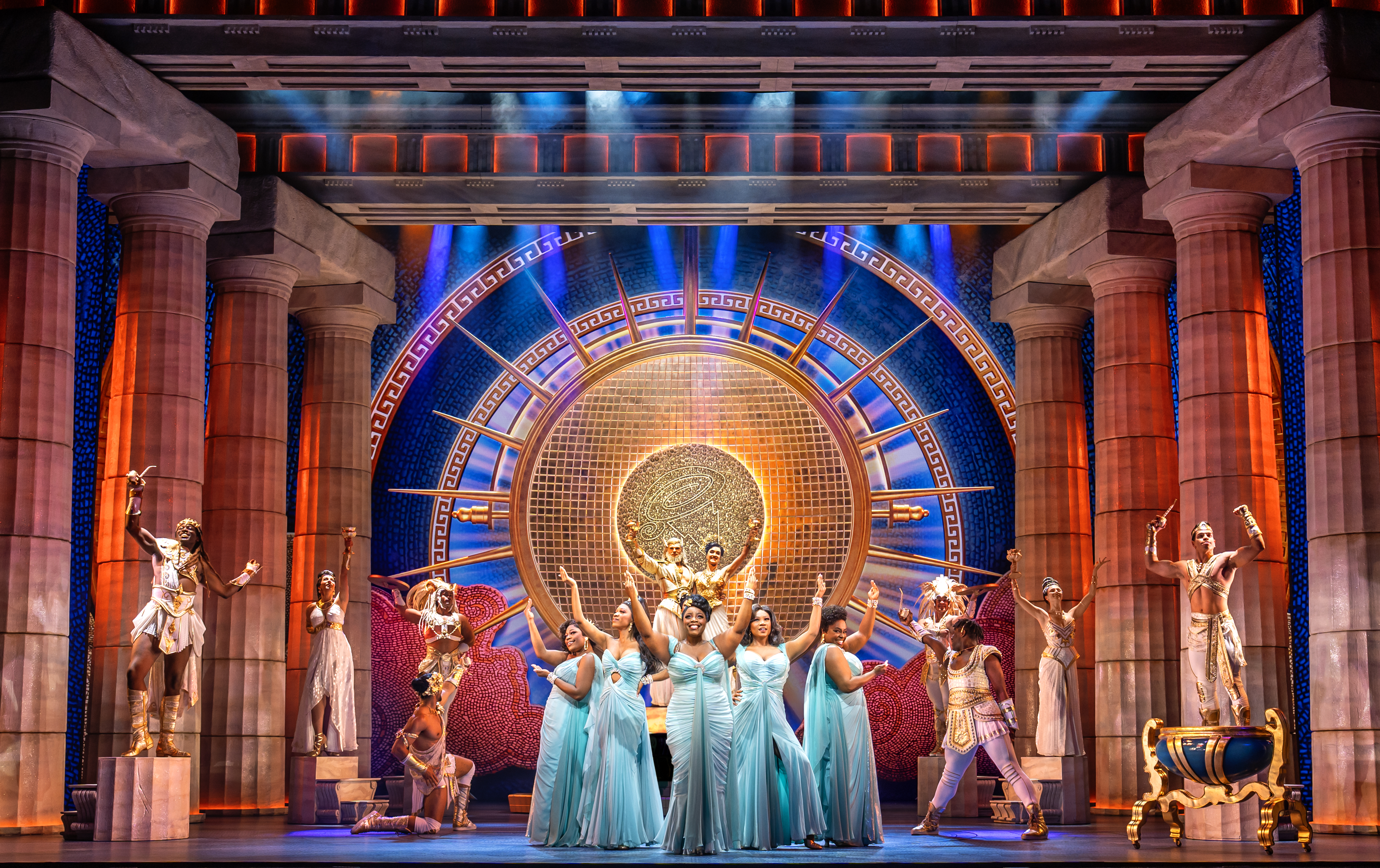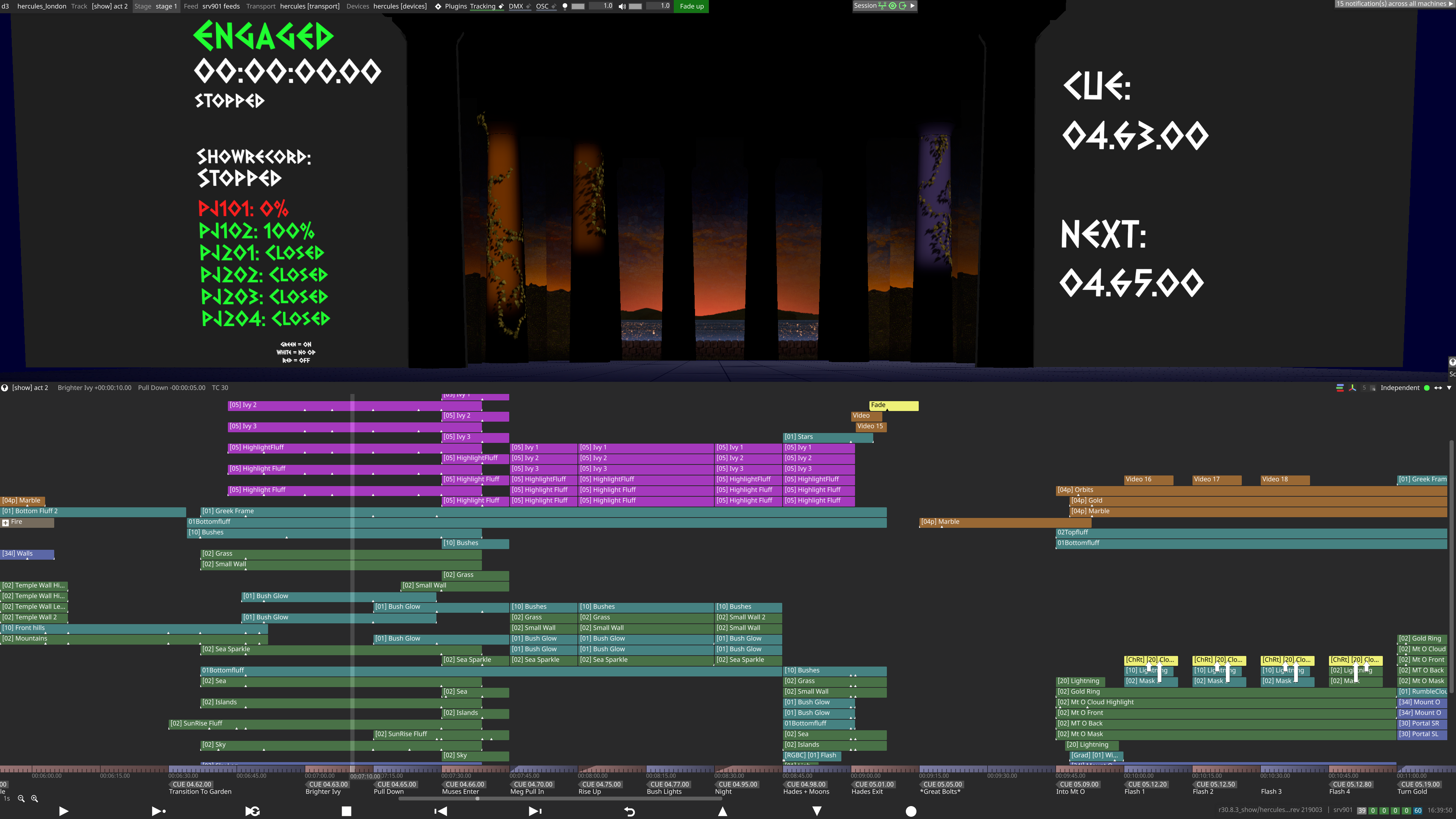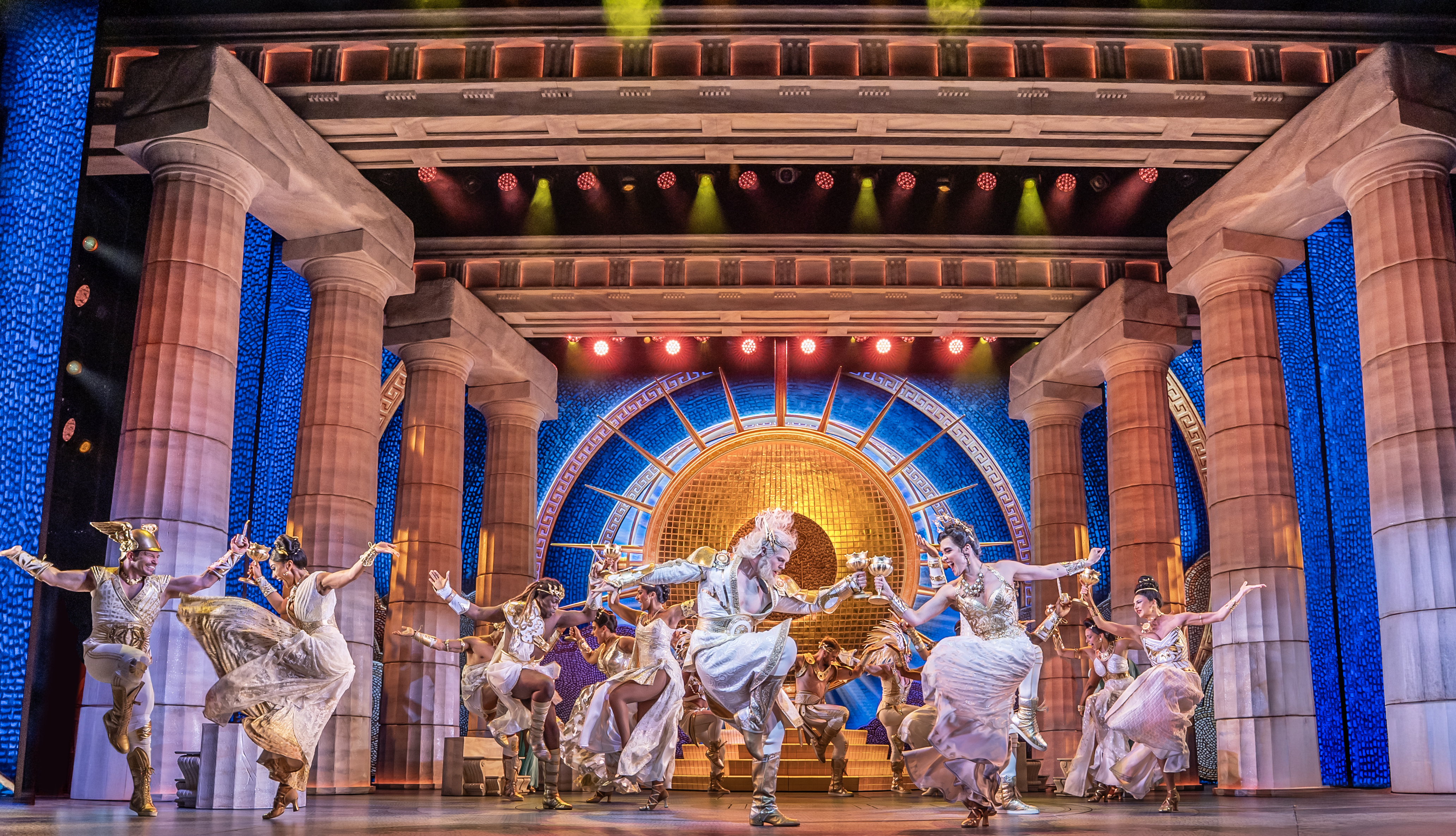Disney’s Hercules Brings Mosaic Visuals To Life On Stage With Disguise
Live Events
Theatre & Opera
Disguise Platform
Workflows

Having previously supported Broadway and West End hits including Redwood, Stranger Things: The First Shadow and Disney’s Frozen, we're proud that Disguise software and hardware is now being used to power the LED backdrop and stage projections for Disney’s Hercules, the new West End musical.
Inspired by the original Disney animation, Hercules features new songs from the original movie's songwriting team, Alan Menken (music) and David Zippel (lyrics), and is written by Robert Horn and Kwame Kwei-Armah.
“Hercules is a fun film to adapt to the stage as it’s all based on Ancient Greek mythology”, explains Video Designer George C. Reeve, who has previously collaborated with Disney Theatrical Group on their production of Tarzan in Germany. “That meant we needed to convincingly create a theatrical and mythological world for our characters to exist within. Ultimately, after many ideas and concept arts, we decided to create this world by using mosaics. This style of art was used heavily by the ancient Greeks to reflect and depict stories of the Gods and other heroic figures many years ago. We created a workflow that meant we could quickly and efficiently create a piece of mosaic content and deliver it to the stage in real-time. This allowed us the flexibility to bring the mosaics to life and have them effortlessly shapeshift on stage, transporting the audience to locations like Mount Olympus, the Underworld, and Earth within seconds.”
To do this, Reeve collaborated with a team including Video System Designer Mogzi, Associate Video Designer Kevin Buysse, and Animator Gustaf Lindström. Together, they used Disguise’s Designer software, six OmniCal cameras, and five Disguise EX 3+ media servers to create and display the show’s visuals - becoming the first live show to use the advanced Colour Management licences now available on the EX range. The audience is then able to see these visuals on a 928-tile ROE LED backdrop, floor projections, and projections on an intricate set of rotating pillars in the foreground. Together, these LED and projected visuals extended the physical set, inviting audiences into Mount Olympus and the mystical worlds of the show.

Bringing a Classic to the Stage
Reeve took the next three months to work on the Hercules visuals by collaborating with the show’s animators to create the base content for the show. “A big challenge we faced was how to create the world of mosaics, being able to manipulate them and create them quickly in tech, whilst delivering the final looks which were desired,” Reeve says. “Using a workflow in Unreal Engine and Substance, we were able to create assets made from the mosaics, light them in the 3D world, and then pass these assets back through the After Effects pipeline and render for Disguise playback.”
Next came the production period, where the final look was composited directly in Designer. Designer’s new Coloured Layers feature was used to help the team easily differentiate between 24 different composite layers involved in the show visuals, enabling them to easily identify what would be projected and what would be displayed on the LED screen.

Once all the show visuals were ready, they were then exported to five EX 3+ media servers set up in a director/actor/understudy configuration, which would allow the understudy to completely take over from the director or actor in case of failure. The servers then connected directly to a Lightware MX2 Matrix, and then onwards to Brompton Tessera for processing and Lightware OPTJ fibre kits for video transmission. Finally, the output was sent to two Panasonic PT-RQ35K projectors, four Epson PQ2220b projectors, and the ROE BP3 LED stage for the backdrop.
As a result, the audience is able to seamlessly travel from the Underworld to the Earth above with ease, following Hercules's journey with a true sense of magical possibility.
The Disguise Difference
According to Video System Designer, Mogzi, using Disguise technology gave the Hercules team more flexibility, allowing them to spend less time worrying about the technicalities of playing out complex, high-resolution visuals and more time focusing on creativity.
“This show required us to build a cue list on a lot of layers to give the full flexibility needed to match scenic and automation moves,” Mogzi says. “With Designer, we could composite directly on the timeline, sometimes playing up to 40 layers at a time at 8k in resolution. We were also able to utilise the visualiser to great effect. This helped us preview exactly what was going to happen on the real stage by seeing it on a 3D version of the stage in Designer ahead of time. That meant we had a fully programmed show before technical rehearsals even began.”

Having the precise OmniCal system also helped the team by allowing them to fully calibrate six projectors in 4k resolution, so they could project visuals onto the show’s moving columns without any dedicated line up time. “Having Disguise be able to receive native tracking data from the STS automation system enabled us to easily track and project images onto any moving parts, smoothly and cleanly. By doing this, we were able to maximise our time in the space to create final content, rather than have to waste precious minutes on the laborious task of doing lineup,” Mogzi explains.
With Disguise, we were confident we’d have pixel-perfect projection calibration, allowing for seamless blending across multiple projectors. We could run a new capture when one of the projectors had been knocked and had a perfect lineup within just one minute.

Video System Designer
Once the show was in technical rehearsals, the team made use of the optional Colour Management licence on Disguise’s EX range, a new feature facilitating improved colour pipeline on live shows and installations. This enabled the team to use the enhanced blending tools of the ACES toolkit, allowing them to tweak exposure and gamma parameters to grade content live and ensure it blended seamlessly with the scenic surroundings. Enabling both ACES and OCIO modes on the EX range, this enhancement will be made publicly available in Disguise’s r31 release.
“Theatre shows have always pushed the core functionality of Designer to its limits in order to deliver creative outcomes. It’s been great to see the adoption of the EX range for shows such as Hercules as it offers a powerful yet accessible video playback solution” says Ollie Newland, Product Manager at Disguise. “We’re excited that the new Colour Management features on the EX range have given the Hercules team access to a colour pipeline that has elevated the look and feel of the show.”
After beginning previews in early June, Disney’s Hercules opened at Theatre Royal Drury Lane in London on 24th June.